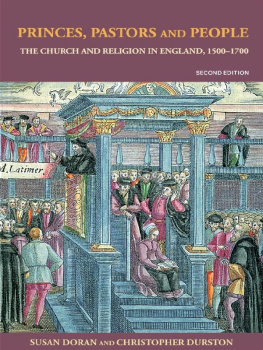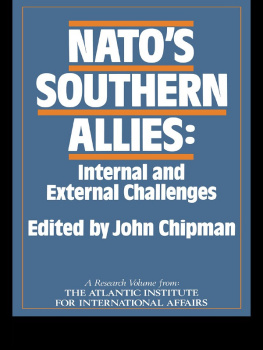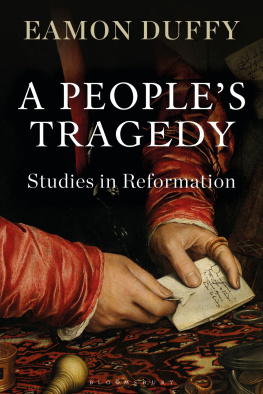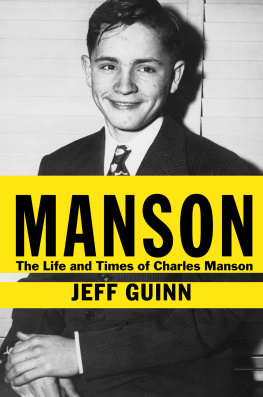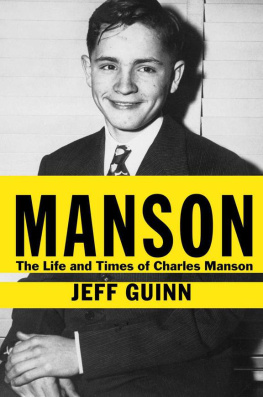RELIGIOUS SPACE IN REFORMATION ENGLAND: CONTESTING THE PAST
RELIGIOUS CULTURES IN THE EARLY MODERN WORLD
Series Editors: | Fernando Cervantes |
Peter Marshall |
Philip Soergel |
TITLES IN THIS SERIES
1 Possession, Puritanism and Print: Darrell, Harsnett, Shakespeare and the Elizabethan Exorcism Controversy
Marion Gibson
2 Visions of an Unseen World: Ghost Beliefs and Ghost Stories in Eighteenth-Century England
Sasha Handley
3 Diabolism in Colonial Peru, 15601750
Andrew Redden
4 Sacred History and National Identity: Comparisons between Early Modern Wales and Brittany
Jason Nice
5 Monstrous Births and Visual Culture in Sixteenth-Century Germany
Jennifer Spinks
6 The Religious Culture of Marian England
David Loades
7 Angels and Belief in England, 14801700
Laura Sangha
8 The Laudians and the Elizabethan Church: History, Conformity and Religious Identity in Post-Reformation England
Calvin Lane
FORTHCOMING TITLES
Anglo-German Relations and the Protestant Cause: Elizabethan Foreign
Policy and Pan-Protestantism
David Scott Gehring
John Bale and Religious Conversion in Reformation England
Oliver Wort
Celestial Wonders in Reformation Germany
Ken Kurihara
Religious Diaspora in Early Modern Europe: Strategies of Exile
Timothy Fehler, Greta Kroeker, Charles Parker and Jonathan Ray (eds)
Jews and the Renaissance of Synagogue Architecture, 14501750
Barry Stiefel
Images of Islam, 14531600: Turks in Germany and Central Europe
Charlotte Colding Smith
RELIGIOUS SPACE IN REFORMATION ENGLAND: CONTESTING THE PAST
BY
Susan Guinn-Chipman
First published 2013 by Pickering & Chatto (Publishers) Limited
Published 2016 by Routledge
2 Park Square, Milton Park, Abingdon, Oxon OX14 4RN
711 Third Avenue, New York, NY 10017, USA
Routledge is an imprint of the Taylor & Francis Group, an informa business
Taylor & Francis 2013
Susan Guinn-Chipman 2013
To the best of the Publishers knowledge every effort has been made to contact relevant copyright holders and to clear any relevant copyright issues.
Any omissions that come to their attention will be remedied in future editions.
All rights reserved, including those of translation into foreign languages. No part of this book may be reprinted or reproduced or utilised in any form or by any electronic, mechanical, or other means, now known or hereafter invented, including photocopying and recording, or in any information storage or retrieval system, without permission in writing from the publishers.
Notice:
Product or corporate names may be trademarks or registered trademarks, and are used only for identification and explanation without intent to infringe.
BRITISH LIBRARY CATALOGUING IN PUBLICATION DATA
Guinn-Chipman, Susan, author.
Religious space in Reformation England: contesting the past. (Religious cultures in the early modern world)
1. Wiltshire (England) Church history 16th century. 2. Cheshire (England)
Church history 16th century. 3. Wiltshire (England) Church history
17th century. 4. Cheshire (England) Church history 17th century.
I. Title II. Series
274.23106-dc23
ISBN-13: 978-1-84893-283-8 (hbk)
Typeset by Pickering & Chatto (Publishers) Limited
CONTENTS
I have accumulated many debts of gratitude in the process of my research, which has been focused on the interplay of memory and space in early modern England. Travel to Britain was funded in large part by J. D. A. Ogilvy Travel Fellowships in British and Irish Studies, University of Colorado at Boulder and by the Andrew W. Mellon Foundation, which enabled me to attend the Culture, Space and Power: Peopling the Built Environment in Renaissance England, c. 14501700 workshop held at the University of Warwick. In Britain, the archivists, librarians and personnel of the National Archives, the British Library, the Bodleian Library, the Society of Antiquaries, London, Cheshire Archives and Local Studies, the Wiltshire and Swindon Archives, the Wiltshire Heritage Museum Archive and Library, the Lancashire Archives and the Wigan Archives Service have been extraordinarily helpful over the course of my research. I am additionally grateful to Mrs Sarah Callander Beckett of Combermere Abbey and Mr Alastair Griffiths of Vale Royal Abbey for sharing their knowledge of each of these former religious houses and for their gracious hospitality. The British and Irish Studies Research Collection at the University of Colorado made possible extensive research in Boulder. I would like to extend sincere thanks to the librarians and staff of the departments of Archives and Special Collections, Government Information, Interlibrary Loan, Libraries Information Technology and the former Media Library for their tireless, cheerful assistance. Additionally, I would like to express my appreciation to all at Pickering & Chatto, including Daire Carr, Philip Good, Eleanor Hooker, Stephina Clarke and Frances Lubbe.
I would like to offer the warmest appreciation to a number of scholars for their support throughout this project. I have been exceptionally fortunate in this process to have had the friendship and guidance of my advisor Marjorie McIntosh. I have benefitted tremendously from her generosity, wisdom and clarity of thought. I am also indebted to a number of others, whose thoughts have contributed significantly to this work. Special thanks go to Matthew Gerber, Virginia Anderson, David Gross, Beth Robertson, Paul Hammer, James Jankowski and David OHara, all of whom have provided their much appreciated expertise. I would also like to extend special thanks to Steve Hindle and Beat Kmin as well as to the speakers and participants of the Culture, Space and Power workshop, who provided a warm and engaging atmosphere in which to study the interrelationship of people, space, practice and theory. Sincere appreciation also goes to Peter Marshall, Norman Jones and Judith Maltby for their insightful comments and expertise. Susan Cogan, Jenn McNabb, Anne Vonhoff, Eloina Villegas, Stephan Edwards and Emily Allen-Shaw offered support and shared their thoughts, always with an abundance of good will and good humour. Sincere thanks also to Marjorie McIntosh, Lis Brown, Shirl Kasper, Susan Cogan and David OHara, who have shown extraordinary patience in listening to ideas, reading drafts and providing valuable insights. My appreciation also goes to my friends and colleagues at Colorado State University for their encouragement and support.
I owe a great number of personal debts. I am extremely grateful to my friend and colleague Deborah Hollis and to friends and colleagues past and present Kris McCusker, Chris Levine, Elizabeth Newsom, Greg Robl, Amanda Brown, and others in the Department of Archives and Special Collections at the University of Colorado at Boulder. Without their support and good cheer, the completion of this project would not have been possible. On a more personal note, my friends and family have provided me with continual warmth and support throughout this process. I would like to express my heartfelt gratitude to my family. A lifetime of immersion in art and architecture, for which I am forever indebted to my parents and to my sister, Julie, led to this project. I owe my sincerest thanks to Michael and to my daughters for their unwavering support and encouragement. Jenn and Katie, your lives have unfolded with such grace while I have been on this journey. This book is dedicated to you.


